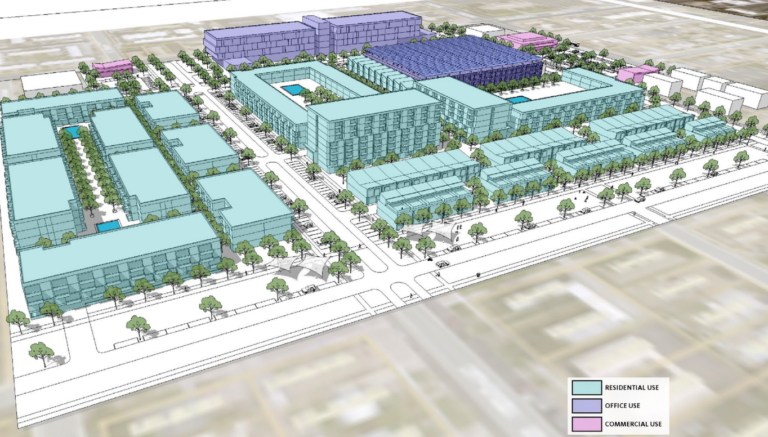The latest plan to transform a 27-acre site at University and Mesa drives may face the same fate as every other proposal since the 1990s – a return to the drawing board and starting over from scratch.
Currently known as Nexus and previously called Transform 17 and Site 17, the latest plan called for a public-private partnership to develop a mixed-use master plan with multiple housing types totaling 800-850 units, 200KSF of office space and 25KSF-30KSF of community-oriented retail.
Partially employing eminent domain, the City spent approximately $6M and leveled a 63-home neighborhood to acquire and prepare the site for economic revitalization.
The Nexus plan was the result of an exclusive dealings agreement between Mesa and developer Miravista Holdings. While talks have continued since that agreement expired in August, Downtown Transformation Manager Jeff McVay told a meeting of the Downtown Mesa Association Board of Directors last month that the plan is in jeopardy and that its continuation is unlikely in its current form.
He told the Board that if the site becomes available again, the City will probably issue a new Request for Proposals.
Neither City officials nor representatives for Miravista have commented publicly on the November meeting. McVay has met at least twice since then with developer representatives, and a City spokesperson said discussions are ongoing.
Initial designs were unveiled in March, and the Mesa Planning and Zoning Board praised the project’s density at an April meeting. The first phase of the development had been hoped to begin over the summer, but there has been no progress on the rezoning process so far.
The expressed hope had been to get the first phase done so that momentum could likely continue over the long-term no matter what happened with economic circumstances in the near- and mid-terms.
Speculation as to what has led to the development’s apparent stall includes supply chain and labor problems, rising construction costs, general inflation, the high costs of capital and other possible problems with financing. Miravista had been expected to use its own resources for the first phase and to cover all preliminary expenses.
The site’s history has become a complicating factor for its future. The neighborhood that was leveled was primarily Hispanic, and Mesa’s methods of acquisition are a sore point with the surrounding community. Advocates are emphasizing a need to acknowledge the site’s history and to incorporate input from the greater community in whatever is eventually built. (Source)


